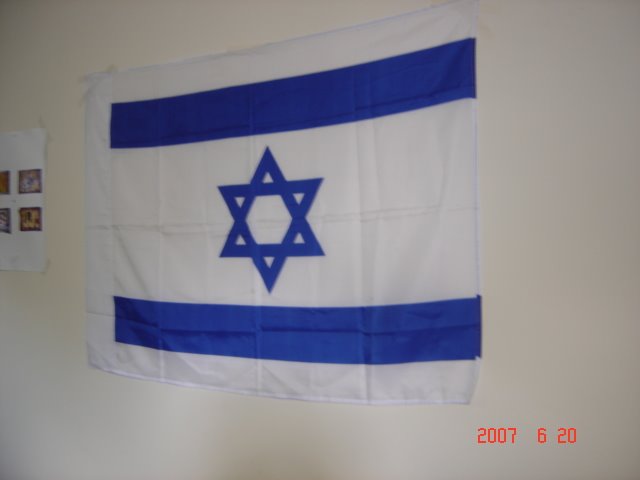Wednesday, July 18, 2007
Parshas Devarim
Summary of The Weekly Torah Reading:
Parshas Devarim
Rabino Aron Tendler
Note: The Shabbos Torah Reading is divided into 7 sections. Each section is called an Aliya [literally: Go up] since for each Aliya, one person "goes up" to make a bracha [blessing] on the Torah Reading.1st and 2nd Aliyot: Moshe recounts the history of the 40 years from after the 2nd Luchos, until the request by the people to send the Spies. (Pasuk 12 is read to the tune of Eicha - Lamentations) He notes the establishment of the Sanhedrin and the Judicial system.3rd and 4th Aliyot: The incident of the Meraglim - Spies and its terrible punishment is related. Remember, the sin of the Spies and the decree for that generation to die out in the desert occurred today, on Tisha B'Av 2449, 3266 years ago.5th and 6th Aliyot: Moshe jumps 38 years during which the decree of the 40 years was carried out and focuses on Israel's encounter with the nations of: Eisav, Moav, and Ammon. The battles with Sichon and Og and the acquisition of Trans-Jordan are retold.7th Aliya: Trans-Jordan is given to the 2 1/2 tribes, and Yehoshua is encouraged to view these victories as a promise of future success in taking Land.
--------------------------------------------------------------------------
Summary of The Haftorah:
Haftorah Devarim
Isaiah 1:1 - 1:27
The Third HaftorahThe Shabbos preceding Tisha B'Av receives its name, "Chazon", from the opening verse of the Haftorah. Starting with the words "Chazon Yishayahu - A vision of Isaiah", we fearfully hear the echo of the Prophet as he decries Israel's betrayal of G-d. (1:11-15) Boundless selfishness, greed, misuse of power by those in authority, and oppression of the defenseless widow and orphan is why the Navi characterizes the people as "the lords of Sodom and the people of Gemorah." (1:10)Hearing Yishayahu's indictment of the people, one would think that the end was near. In truth Yishayahu began to prophesies in 3142 (619 b.c.e.) and the Beis Hamikdash was destroyed in 3338 (423 b.c.e); 196 years before the end! Clearly, the Navi's intent was to effect change in hope of averting the destruction. If so, our reason for mourning on Tisha B'Av must be better defined."The Jew does not mourn that thousand of years ago the Temple was destroyed, but that it had to be destroyed. Not over the destruction, but over the causes of its destruction". (S.R.Hirsch)If only the people would have heeded the cry of the Navi! If only they could have foreseen with the clarity of a prophet's vision what it means for G-d to "draw back his protecting hand" (1:25) from Israel! Shabbas Chazon transports us back in time. We stand in the shadow of the Beis Hamikdash. We hear the word of G-d as the Navi beseeches His children to do Teshuva. Will we listen? Would we listen?
Parshas Devarim
Rabino Aron Tendler
Note: The Shabbos Torah Reading is divided into 7 sections. Each section is called an Aliya [literally: Go up] since for each Aliya, one person "goes up" to make a bracha [blessing] on the Torah Reading.1st and 2nd Aliyot: Moshe recounts the history of the 40 years from after the 2nd Luchos, until the request by the people to send the Spies. (Pasuk 12 is read to the tune of Eicha - Lamentations) He notes the establishment of the Sanhedrin and the Judicial system.3rd and 4th Aliyot: The incident of the Meraglim - Spies and its terrible punishment is related. Remember, the sin of the Spies and the decree for that generation to die out in the desert occurred today, on Tisha B'Av 2449, 3266 years ago.5th and 6th Aliyot: Moshe jumps 38 years during which the decree of the 40 years was carried out and focuses on Israel's encounter with the nations of: Eisav, Moav, and Ammon. The battles with Sichon and Og and the acquisition of Trans-Jordan are retold.7th Aliya: Trans-Jordan is given to the 2 1/2 tribes, and Yehoshua is encouraged to view these victories as a promise of future success in taking Land.
--------------------------------------------------------------------------
Summary of The Haftorah:
Haftorah Devarim
Isaiah 1:1 - 1:27
The Third HaftorahThe Shabbos preceding Tisha B'Av receives its name, "Chazon", from the opening verse of the Haftorah. Starting with the words "Chazon Yishayahu - A vision of Isaiah", we fearfully hear the echo of the Prophet as he decries Israel's betrayal of G-d. (1:11-15) Boundless selfishness, greed, misuse of power by those in authority, and oppression of the defenseless widow and orphan is why the Navi characterizes the people as "the lords of Sodom and the people of Gemorah." (1:10)Hearing Yishayahu's indictment of the people, one would think that the end was near. In truth Yishayahu began to prophesies in 3142 (619 b.c.e.) and the Beis Hamikdash was destroyed in 3338 (423 b.c.e); 196 years before the end! Clearly, the Navi's intent was to effect change in hope of averting the destruction. If so, our reason for mourning on Tisha B'Av must be better defined."The Jew does not mourn that thousand of years ago the Temple was destroyed, but that it had to be destroyed. Not over the destruction, but over the causes of its destruction". (S.R.Hirsch)If only the people would have heeded the cry of the Navi! If only they could have foreseen with the clarity of a prophet's vision what it means for G-d to "draw back his protecting hand" (1:25) from Israel! Shabbas Chazon transports us back in time. We stand in the shadow of the Beis Hamikdash. We hear the word of G-d as the Navi beseeches His children to do Teshuva. Will we listen? Would we listen?




